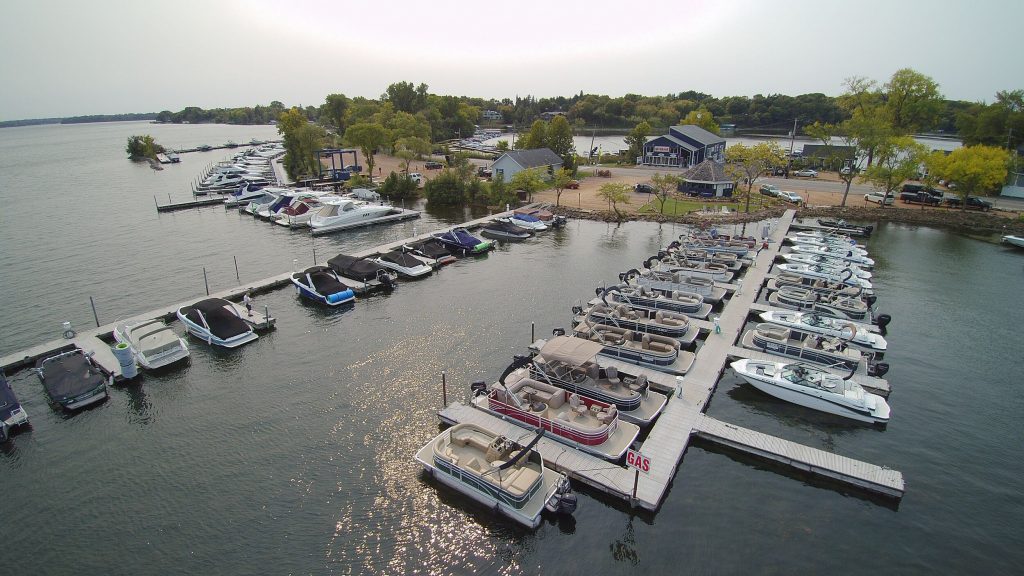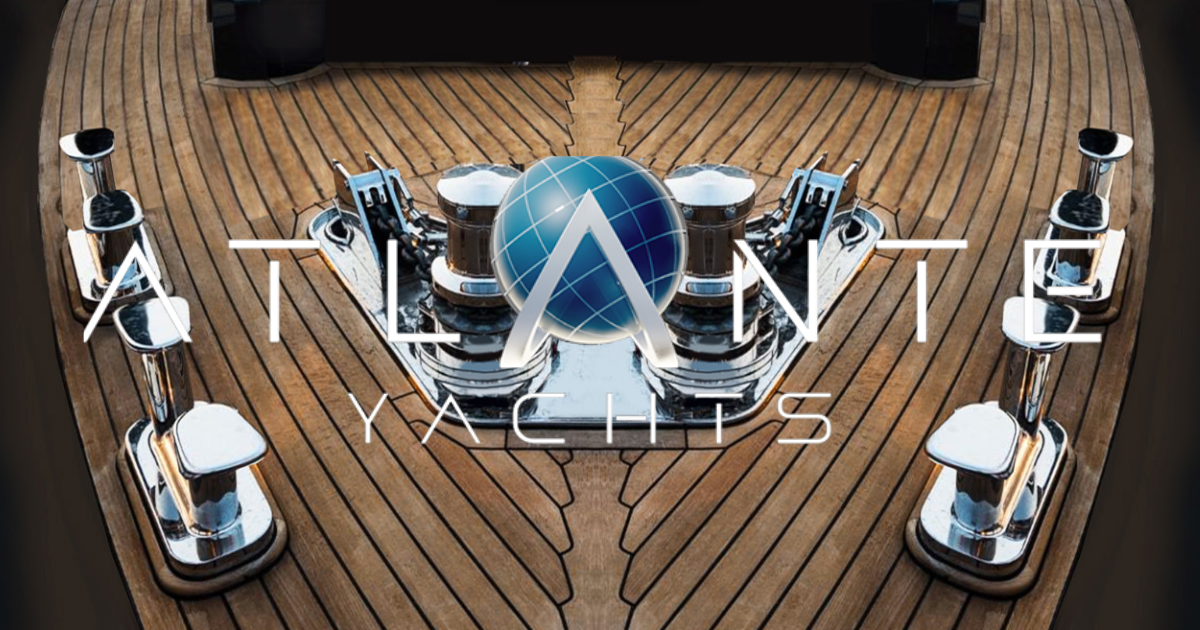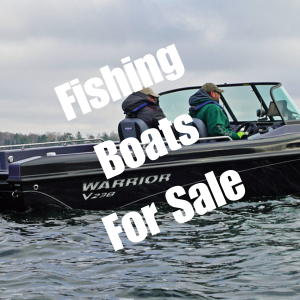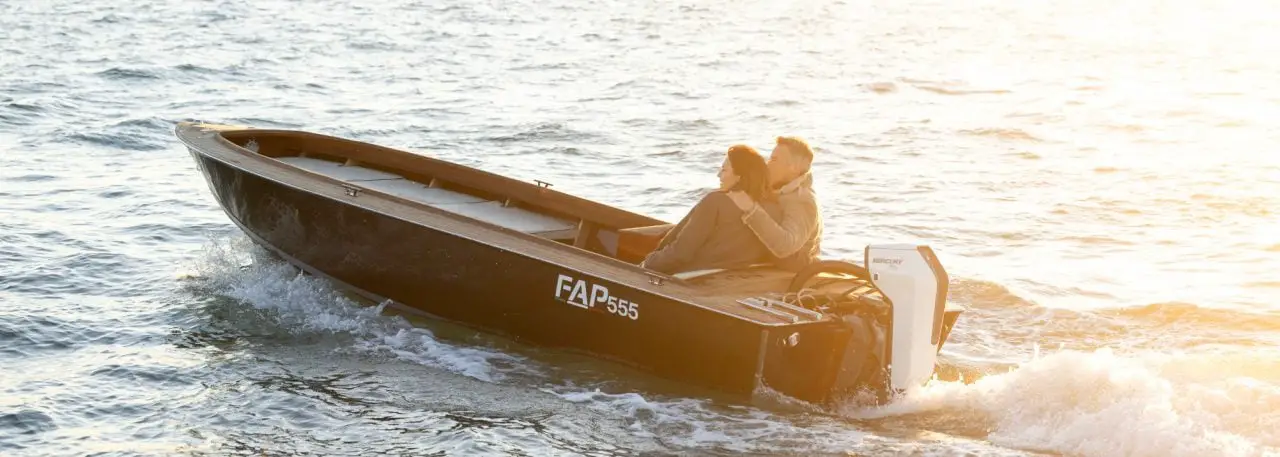Boat Slip: Essential Features for Safe Docking
A boat slip is a specific spot in a marina or harbor where boats can be safely docked. It provides a dedicated space for boat owners to park and store their vessels, offering protection from waves and weather.

Unlike a general dock area, a boat slip is usually designed for a single boat and may have features like cleats, bumpers, and utility connections.
Boat slips come in different sizes and types to accommodate various vessels.
Some are covered, while others are open.

Many marinas offer amenities like electricity, water hookups, and fuel services near the slips. This makes it easy for boat owners to maintain and use their boats.
Choosing the right boat slip depends on factors like boat size, location, and available facilities.
Boat owners should consider their needs and budget when picking a slip.
Some people rent slips at marinas, while others may have private slips at their waterfront homes.

Key Takeaways
- Boat slips provide secure, dedicated spaces for docking and storing boats
- Slips come in various sizes and types with different amenities
- Selecting the right slip depends on boat size, location, and personal needs
Boat Slip Fundamentals
Boat slips are essential docking spaces for vessels. They provide a safe place to store boats when not in use.
Defining Boat Slips
A boat slip is a designated space in a marina or harbor for docking boats. It keeps vessels secure and easy to access. Boat slips protect boats from waves and tides.
Slips have mooring points on three sides. This lets boats tie up safely.
The size of a slip matters. It must fit the boat's length and width, including any extra gear.
Types of Boat Slips
There are several kinds of boat slips. Each type serves different needs.
Wet slips keep boats in the water. They're good for quick access and regular use.
Dry slips store boats on land. This protects them from water damage.
Covered slips shield boats from sun and rain. They help boats last longer.
Some slips use floating docks that move with water levels. Others have fixed docks that stay in place.
The right slip depends on the boat's size and how often it's used.
Bigger boats need larger slips. Smaller boats can fit in more compact spaces.
Location and Selection
Choosing the right boat slip involves careful consideration of the marina's location and layout.
Choosing the Right Marina
When selecting a marina, look at its proximity to popular boating areas and waterways.
Check water depths to ensure they can accommodate your boat's draft.
Many marinas offer amenities like fuel docks, pump-out stations, and repair services. These can make boating more convenient.
Security is crucial. Look for marinas with gated access, security cameras, and on-site staff.
Good lighting along docks improves safety at night.
Ask about local boating regulations and if the marina helps enforce them.
Consider the marina's location relative to your home or favorite destinations.
Easy road access can save time when traveling to and from your boat.
Some boaters prefer marinas close to restaurants, shops, or attractions for added convenience.

Dock Design and Layout
A well-designed dock layout makes boating easier and safer.
Wide main walkways allow for easy movement of gear and supplies.
Look for finger piers that provide enough space on both sides of your boat for comfortable boarding.
Check the condition of cleats, bumpers, and other tie-up equipment. These should be sturdy and well-maintained.
Some docks have integrated utility hookups for water and electricity, which can be very handy.
Think about ease of navigation within the marina.
Slips near the main channel may offer quicker access to open water but might experience more wake from passing boats.
Inner slips can be more sheltered but may require more maneuvering to reach.
Boat lifts or floating docks can protect your vessel from water level changes. These features are especially useful in areas with significant tides or seasonal water fluctuations.
Marina Amenities
Marinas offer a range of amenities to make boating more convenient and enjoyable. These features provide comfort, safety, and essential services for boat owners.
Available Services
Most marinas supply electricity and water hookups for docked boats. This allows owners to power onboard systems and fill water tanks.
Many marinas also have waste disposal facilities to empty holding tanks.
Fuel docks let boaters refuel without leaving the marina. Some offer both gas and diesel options.
Repair services are often available for routine maintenance or emergency fixes.
Cleaning stations help keep boats looking their best. These may include pressure washers and cleaning supplies.
Some marinas have laundry facilities for washing clothes and linens from the boat.

Security and Protection
Marina security is a top priority to protect boats and equipment.
Many use surveillance cameras to monitor docks and common areas.
Security personnel may patrol the grounds day and night.
Gated entry systems control access to boat slips and marina facilities. This helps prevent theft and vandalism.
Well-designed docks and breakwaters shield boats from wind and waves.
Covered slips offer extra protection from sun and weather damage. Some marinas have hurricane plans to secure boats during storms.
Fire safety equipment is placed throughout the property as a precaution.
Boat Slip Utilization
Boat slips offer a dedicated space for mooring vessels securely. Proper use of a slip involves specific techniques and regular upkeep to ensure safety and longevity.
Mooring and Docking Techniques
Boat owners should approach their slip slowly and at an angle. This method allows for better control in tight spaces.
Once near the slip, turn the wheel sharply to align the boat parallel to the dock.
Use fenders to protect the boat's hull from rubbing against the dock.
Attach bow and stern lines to the cleats or pilings to keep the vessel in place. Adjust these lines for tides and weather changes.
For larger boats, consider using spring lines. These provide extra stability and prevent forward or backward movement.
In windy conditions, approach the slip from downwind for easier maneuvering.

Maintaining a Slip
Regular maintenance keeps a boat slip safe and functional.
Remove any debris or plant growth from the water around the slip. This prevents damage to propellers and hulls.
Check cleats and pilings for wear. Replace them if they show signs of rot or damage.
Keep the dock surface clean and free of algae to prevent slips and falls.
Inspect electrical connections regularly. Salt water can corrode wiring, creating fire hazards. Have a professional check these systems annually.
During storms, secure loose items on the dock. Add extra lines to boats if needed. After bad weather, check for any damage to the slip or surrounding structures.
Economics of Boat Slips
Boat slip costs vary based on location, size, and amenities. Owners can rent out slips for extra income. Buying a slip can be a long-term investment.
Understanding Costs
Boat slip prices range from $20 to $30 per foot per month in many areas. A 30-foot slip could cost $600 to $900 monthly. Yearly fees may be cheaper.
Location affects prices greatly. Popular coastal areas charge more due to high demand. Inland lakes or less busy spots often have lower rates.
Slip size is a big factor. Larger boats need bigger slips, which cost more. Some marinas charge extra for wider boats.
Amenities impact costs too. Electricity, water hookups, and security features can raise prices. Basic slips without extras are usually cheaper.
Rental and Income Options
Renting a slip offers flexibility for boat owners.
It's good for those who don't use their boat often or want to try different locations.
Short-term rentals let boaters visit new places without committing long-term. Daily or weekly rates are higher than monthly ones.
Slip owners can make money by renting out their space. This works well in areas with high demand and limited availability.
Private marinas sometimes allow slip owners to rent out spaces. This can offset ownership costs or generate income.
Seasonal rentals are common in colder areas. Boat owners may pay less for winter storage when they're not using their vessels.
Additional Considerations
Choosing the right boat slip involves more than just finding a space to park your vessel. Size, accessibility, and storage options play crucial roles in the decision-making process.
Space and Size Considerations
Boat slips come in various sizes to fit different types of vessels.
T-shaped slips offer more room for larger boats.
The length and width of your boat, including all gear, must fit comfortably in the slip.
Water depth is another key factor. Deeper slips can accommodate boats with larger drafts.
Make sure to check the depth at low tide to avoid grounding.
Some marinas have berths for different boat sizes. This lets you pick a slip that matches your vessel perfectly.
A well-fitted slip makes docking easier and safer.
Boat Storage and Accessibility
A boat slip provides a dedicated space for your vessel. This makes it easy to access your boat whenever you want to use it.
Look for slips with convenient parking nearby.
Some marinas offer dry storage options. This can be useful for protecting your boat during bad weather or off-season.
Consider how easy it is to get in and out of the slip. Factors like waves and currents can affect accessibility.
Slips in calmer areas may be easier to use.
Think about visitor access too. If you plan to have guests on your boat, choose a slip that’s easy for them to reach.
Personal preference plays a big role in this choice.
Frequently Asked Questions
Boat slips can be confusing for new boaters. These questions cover key points about finding, renting, and understanding different types of slips.
How do I find a boat slip available for purchase?
Check marina websites and real estate listings. Talk to local yacht brokers and marina managers.
They often know about slips for sale. Look for "dock and dine" restaurants, as they may have slips for purchase nearby.
What differentiates a boat slip from a boat dock?
A boat slip is a specific space for one boat. It’s usually enclosed on three sides. A dock is a platform along the shore where many boats can tie up.
Docks are more open and less protected than slips.
Where can I locate boat slips available for rent?
Call local marinas directly. Check online marketplaces like Dockwa or Snag-A-Slip.
Ask other boaters in your area for recommendations. Some apps show real-time slip availability at participating marinas.
What are the typical costs associated with renting a boat slip in Southern California?
Prices vary by location and boat size. Expect to pay $15-30 per foot of boat length per month.
Prime spots in popular areas like Newport Beach or Marina del Rey cost more. Some marinas charge extra for power, water, or other services.
What varieties of boat slips are there?
Common types include: • Single slips for one boat • Double slips for two boats side-by-side • End ties for larger boats • Covered slips with roofs for extra protection
Slips also vary in size and amenities offered.
Can you explain the difference between a boat slip and a berth?
The terms are often used interchangeably. Technically, a slip is a space between two docks or pilings.
A berth can refer to any spot where a boat is secured, including slips, mooring balls, or anchorages.
In practice, most boaters use both words to mean a designated docking space.
Charlie is Editor-in-Chief of Sea Magazine







